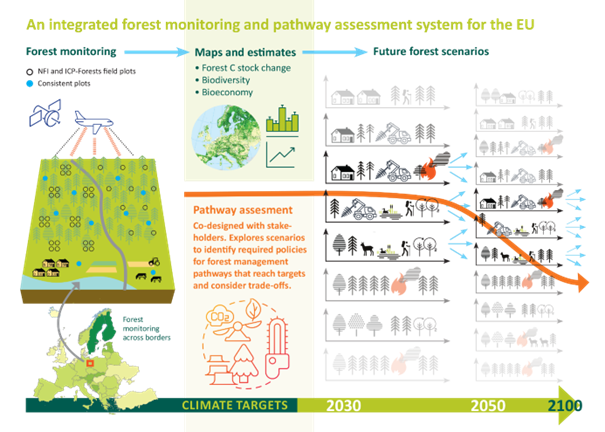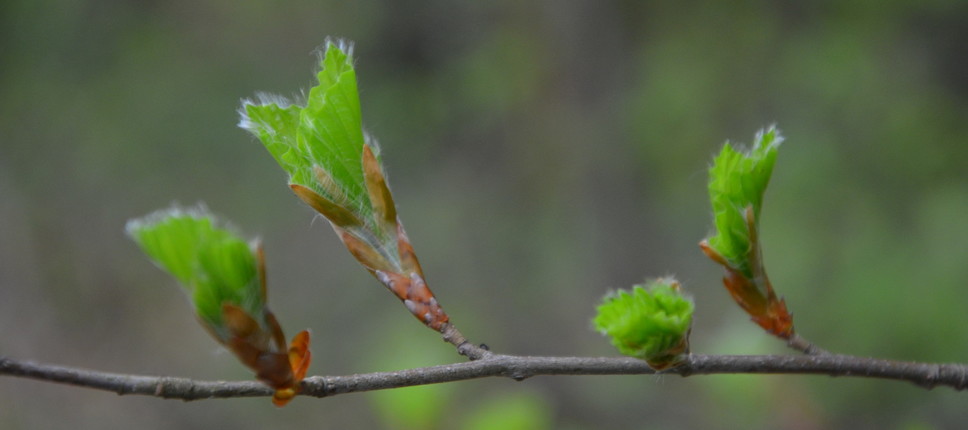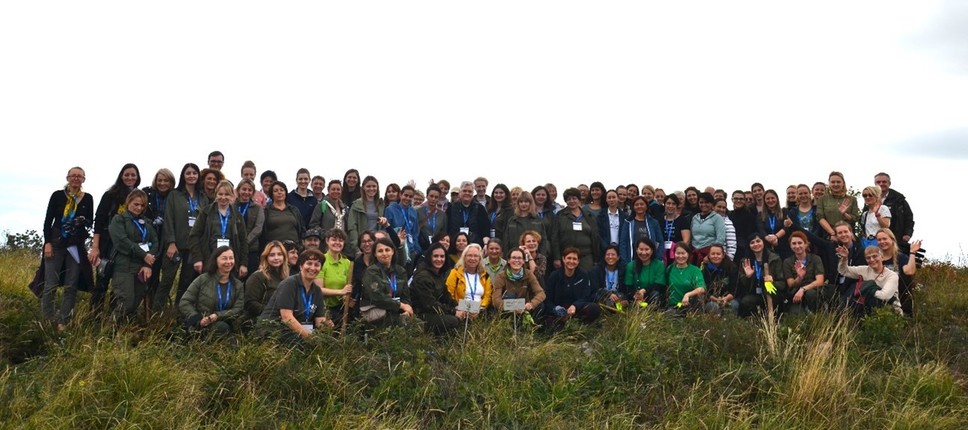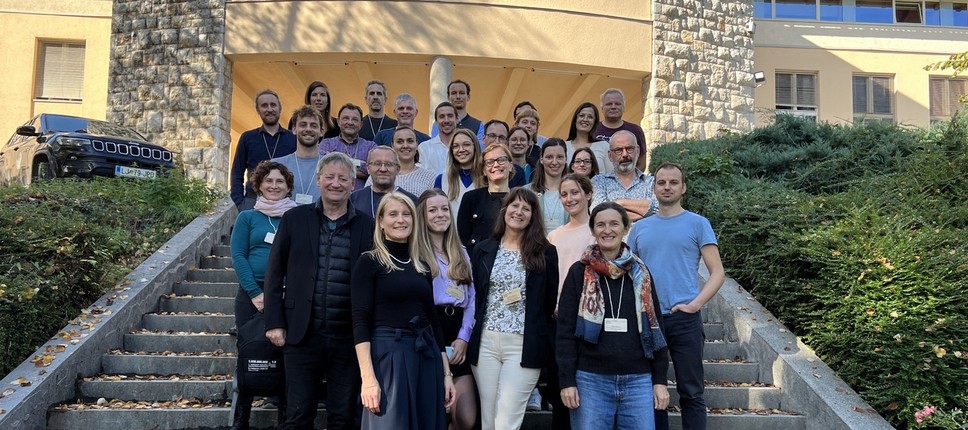A better monitoring of Europe’s forest will help countries mitigate and adapt to climate change.
- Our overall aim is to aid Europe’s transition to a climate-neutral and resilient society and economy, says Johannes Breidenbach, coordinator for EU’s newly launched PathFinder project.
- Purposeful policy decisions are based on reliable information on the state and future development of forest resources, Breidenbach says.
All in all, 23 research organizations across Europe take part in the four-year EU-funded PathFinder endeavor to improve Europe’s forest monitoring capability – helping increase carbon storage and stop biodiversity loss in forests.
Forests are central to Europe’s economies, climate, and biodiversity
Firstly, the PathFinder project aims to develop a common monitoring system of Europe’s forests, based on existing national forest inventories and monitoring systems. This is important because coherent forest monitoring ensures updated and consistent information about greenhouse gas emissions from forests across Europe.
- Even between neighboring countries there are differences in the way national forest inventories are conducted, Breidenbach says.
- Through the PathFinder project we will harmonize the way data about forests are collected across Europe and harmonize the way this information is shared.
In addition, the EU requires policies that foster a forest-based bioeconomy that help mitigate climate change and promote biodiversity.
- Currently, decision making is hampered because timely and reliable information is missing.
A PathFinder method for climate mitigation and adaptation in Europe
A second aim of the EU-funded PathFinder project is to develop models that can project how European forests can contribute to climate mitigation and adaptation under various scenarios, using different natural and socio-economic drivers.
- Such a system is required to monitor progress towards targets, and for policy makers to continuously adjust and adapt as new information becomes available, says Breidenbach.
This enables the third aim where PathFinder scientists, together with stakeholders – including policymakers, landowners, forest managers, and nature & biodiversity conservationists – set forward to mobilize their understanding and evidence in ways that can help link short-term decisions to long-term outcomes, thus providing more effective and resilient future forest management pathways.
- There are many options leading towards a future climate-neutral Europe. Our approach in the PathFinder project is to find the pathway for Europe’s forests that results in the least trade-offs and maximum synergies among the many ecosystem services forest provide, says Breidenbach.
Contact Person
Research Professor Johannes Breidenbach, johannes.breidenbach@nibio.no
Telephone: (+47) 974 77 985
Twitter: @Jo_Breidenbach
https://nibio.no/en/projects/PathFinder



PathFinder Project Illustration, Image Credit: NIBIO

PathFinder Kick-Off Group Photo, photo: Erling Fløistad, NIBIO
Facts about PathFinder
The four-year PathFinder has a budget of Euro 6.3 million and consists of 23 research partners and coordinated by NIBIO’s Research Professor Johannes Breidenbach.
Duration: September 2022 – August 2026
The PathFinder project is divided into six work packages:
- Field data collection – Consejo Superior de Investigaciones Científicas (CSIC), Spain
- A mapping and estimation platform for LULUCF and biodiversity monitoring – Natural Resources Institute Finland (LUKE)
- Forest and land management scenarios – Vrije Universiteit Amsterdam (VUA), Netherlands
- Policy and pathway assessment – Albert-Ludwigs University Freiburg (ALU), Germany
- Communication, dissemination, and exploitation – European Landowners’ Organization (ELO), Belgium
- Project management – Norwegian Institute of Bioeconomy Research (NIBIO), Norway
PathFinder receives funding from the European Union’s Horizon Europe (HORIZON) Research & Innovation Programme (ID No 101056907).
Twitter: @EuPathFinder
Project partners
- NIBIO – Norwegian Institute of Bioeconomy Research https://nibio.no/en
- Albert-Ludwigs University Freiburg https://uni-freiburg.de/en/
- CICERO – Center for International Climate Research https://cicero.oslo.no/en
- Consejo Superior de Investigaciones Científicas https://www.csic.es/en
- Croatian Forest Research Institute https://www.sumins.hr/en/
- Czech Forest Management Institute http://www.uhul.cz/home
- ELO - European Landowners Organization https://www.europeanlandowners.org/
- Federal Research and Training Center for Forests, Natural Hazards and Landscape https://www.bfw.gv.at/
- Finnish Meteorological Institute https://en.ilmatieteenlaitos.fi/
- IEFC – Institut Européen de la Forêt Cultivée https://www.iefc.net/
- INBO - Research Institute for Nature and Forest https://www.vlaanderen.be/inbo/en-gb/homepage/
- JRC – Joint Research Center https://joint-research-centre.ec.europa.eu/index_en
- LUKE - Natural Resources Institute Finland https://www.luke.fi/en
- IGN - National Institute of Geographic and Forest Information https://www.ign.fr
- Slovenian Forestry Institute https://www.gozdis.si/en/
- Thünen Institute of Forest Ecosystems https://www.thuenen.de/en/wo/
- Treemetrics https://treemetrics.com/
- University of Bristol https://www.bristol.ac.uk/
- University of Göttingen https://www.uni-goettingen.de/en/1.html
- University of Helsinki https://www.helsinki.fi/en
- Vrije Universiteit Amsterdam https://vu.nl/en
- VTT - Technical Research Centre of Finland Ltd. https://www.vttresearch.com/en
- WSL - Swiss Federal Research Institute for Forests Snow and Landscape Research https://www.wsl.ch/en/index.html



